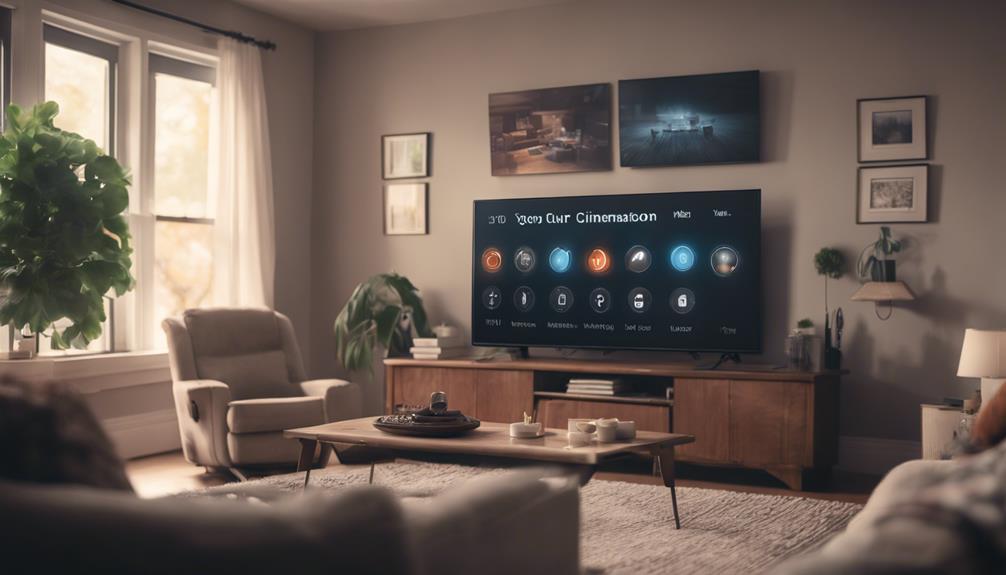Navigating the waters of home climate control can seem like sailing through a foggy sea, but with the right compass, you'll find your way.
By understanding your daily routine, you can set temperatures that keep your home cozy when you're there and save energy while you're away.
Leveraging smart controls adds a layer of convenience that can adapt to your life's ever-changing rhythms.
But how do you align these elements to create a perfectly balanced indoor climate without breaking the bank?
Join us as we explore three key tips that will guide you to more comfortable and cost-effective living.
Key Takeaways
- Align thermostat settings with your daily routine for optimal comfort and energy savings.
- Upgrade to a smart thermostat for automatic adjustments based on occupancy and lifestyle.
- Set your thermostat to lower temperatures when away or asleep to reduce energy consumption.
- Use smart controls to remotely adjust your home's climate, ensuring efficiency and convenience.
Understanding Your Routine
To tailor your home's climate schedule effectively, it's crucial first to understand your daily routine, noting when you're typically out, asleep, or most in need of comfort. Start by identifying key moments in your day—wake-up, departure, return, and bedtime. Recognize your temperature preferences during these times, ensuring your home is always at the perfect level of comfort.
Keep occupancy patterns in mind; there's no need to heat an empty house. By aligning your thermostat schedules with your routine, you're not just creating a comfortable environment; you're also tapping into significant energy savings. Smart thermostats can make this process seamless, automatically adjusting to your life's rhythm and ensuring your heating works smarter, not harder.
This approach guarantees a cozy home tailored precisely to your daily flow.
Setting Efficient Temperatures

Kicking off with setting efficient temperatures, it's important you dial your thermostat to 68 degrees Fahrenheit in winter for prime energy savings. This simple adjustment is key to balancing your home's warmth without overworking your heating system.
To further optimize energy efficiency and reduce energy consumption, consider these strategic steps:
- Maintain a moderate gap between the indoor temperature and the great outdoors to lessen heating costs.
- Adjust the temperature down by 7-10 degrees for 8 hours daily, potentially saving up to 10% annually.
- Upgrade to programmable thermostats to automatically set temperature settings, aligning with your routine for a comfortable temperature without constant manual changes.
These tweaks not only support a greener lifestyle but also guarantee your living space remains comfortably warm.
Leveraging Smart Controls

Smart controls revolutionize how you manage your home's climate, offering convenience and efficiency at your fingertips. With remote access, you can adjust temperature settings from anywhere, using just your smartphone or tablet.
These savvy devices are packed with energy-saving features, like geofencing, which automatically tweaks your settings based on your location, ensuring you're not heating an empty house. They learn your preferences, crafting a customized schedule that aligns with your lifestyle for best comfort and efficiency.
Plus, with energy usage reports, you can analyze your heating and cooling patterns, making informed adjustments. Integrating smart controls into your home climate system not only leads to significant energy savings but also enhances convenience, allowing you to enjoy a perfectly tailored home environment effortlessly.
Frequently Asked Questions
Why Does 72 Degrees Feel Cold in House?
You might feel cold at 72 degrees because of humidity levels, wind chill, and your personal metabolism. Clothing, activity, sun exposure, window and floor insulation, air circulation, and heating sources also play big roles.
Is It Cheaper to Keep House at Constant Temperature?
It's not cheaper to keep your house at a constant temperature. Using smart thermostats with programmable settings and making seasonal adjustments can enhance energy efficiency, lower utility costs, and maintain your comfort levels more effectively.
Is 72 Too High for Thermostat in Winter?
Yes, setting your thermostat to 72 in winter is high. For energy savings and comfort balance, try 68 degrees, use zone heating, wear layers, and utilize sunlight. Consider nighttime settings and thermostat technology to prevent drafts.
Can I Set My Heat Pump to 72 Degrees?
Yes, you can set your heat pump to 72 degrees to balance comfort and energy savings. It's efficient, keeps you cozy, and smart thermostats can adjust for seasons, optimizing your home's temperature and energy use.
Conclusion
By getting to know your daily routine, setting efficient temperatures, and using smart controls, you've taken a big step towards a more comfortable and cost-saving home. Remember, it's all about finding what works best for you and your family.
Keep tweaking those settings until you hit the sweet spot between coziness and energy efficiency. Embrace the convenience of technology, and let it work for you.
Here's to a perfectly tailored home climate that feels just right, every day.

